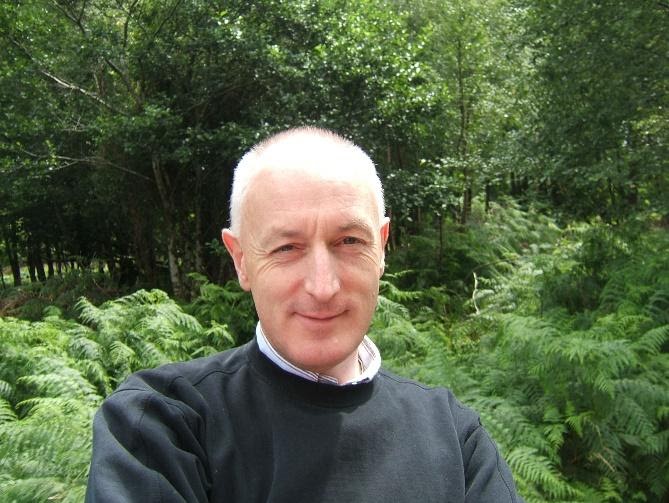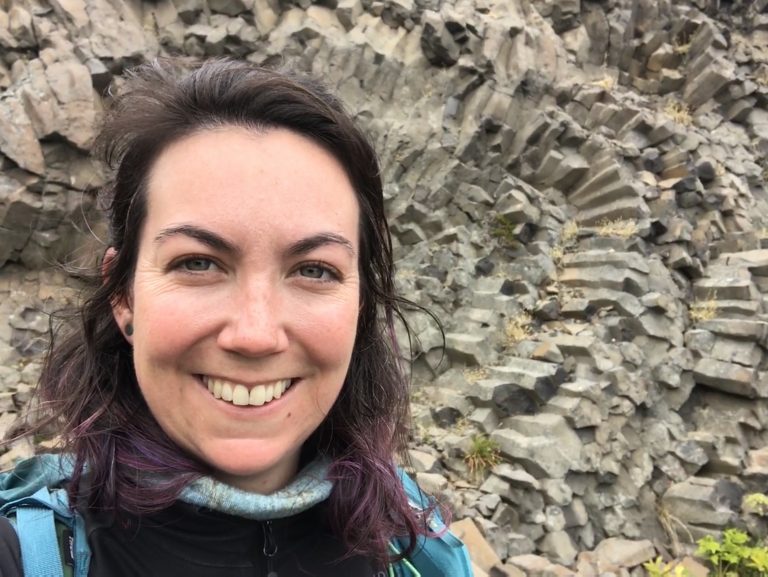AirMiners Panel Engages the Challenge of Verifying Carbon Removal for Enhanced Weathering
Across a landscape, weathering rates can vary widely due to differences in soil. These include properties such as moisture content, soil pH, temperature, soil mineralogy, and vegetative cover. (Credit: John Spencer)
In November 2022, a panel of four AirMiners (those working to ‘mine’ atmospheric carbon and stabilize it in the ground) met to discuss the potential of Enhanced Rock Weathering (ERW) and associated challenges for establishing credibility and trust. In short, we need a way to prove that greenhouse gasses have been removed from the atmosphere. To help with this goal, the panel proposed a groundbreaking new system of measuring, reporting and verification (MRV) for enhanced weathering. These experts explained how they envision this system working.
Among the subject matter experts who contributed to the lively and engaging symposium were Dr. Mel Murphy, the Research Lead at UNDO, Mary Yap, the Co-Founder and CEO of Lithos, Professor Frank McDermott, the Scientific Lead at Silicate, and Dr. Leonard Smith, the VP of Methodologies at Nasdaq’s Puro.earth.
“The question here is how do we develop a MRV framework for this kind-of open system in a way that allows us to have trust and rigor and credibility in the field.”
-Mary Yap, Lithos CEO and Co-Founder
The role of MRV in building the case for enhanced weathering
ERW has shown great promise as a convenient and effective way to drive down atmospheric carbon concentrations, but as with every potential large-scale solution to carbon drawdown, high-quality long-term data is needed to understand the process and quantitatively determine the sequestration potential. Enter MRV.
MRV is a system designed to prove that specific mitigation actions have actually removed greenhouse gases from the atmosphere. MRV requires a multistep process which begins with establishing a baseline level, collecting data over time, and submitting results to a third party to verify accuracy. This enhances the scientific credibility of carbon drawdown methods and can monetarily incentivize actions which improve environmental sustainability.
Carbon credits have become an important incentive to promote carbon reduction, but they must only be issued for proven results. For more established reduction methods, such as afforestation and renewable energy, institutions such as the World Bank’s Climate Change Fund Management Unit have developed standards to measure greenhouse gas reductions. For instance, in afforestation efforts, data about changes in forest canopy cover is collected and processed to calculate emissions reductions. Afforestation is one activity which can be tracked and measured with relative ease by quantifying the biomass of trees as they grow. After the report is verified by a 3rd party for legitimacy, carbon credits can be issued.
By contrast, since ERW sequesters carbon by the process of weathering, it is more complicated to measure. Therefore, MRV frameworks for ERW are still an open question. While MRV is important for establishing the scientific rigor of a method and showing progress towards large-scale goals, there are formidable challenges when it comes to applying an MRV framework to ERW.
Model Development
To understand the efficacy of ERW in various systems and scale the technology, we must use model simulations to predict rock weathering. The idea behind these models is that if you can predict weathering rates (combining geochemical and climate models) you can predict the subsequent amount of carbon sequestration.
Fundamentally, the chemical weathering of silicate minerals controls CO2 levels in the atmosphere over geological timescales. ERW is a technique designed to speed up this process. To understand how exactly ERW works to sequester carbon, start with the natural weathering process. Water (H2O) and carbon dioxide (CO2), which are ubiquitous in the soil environment, undergo a carbonation reaction to form carbonic acid (H2CO3). When carbonic acid interacts with primary minerals, CO2 is pulled from the air and stored as carbonates. Bicarbonate (HCO3–) is a type of dissolved carbonate that typically ends up in oceans, where it can be stabilized for a duration greater than 100,000 years. Carbon can also be stored in solid carbonate minerals such as calcium carbonate. Since rock dust has a far greater exposed surface area than solid rock, there are far more surfaces for these reactions to occur in finely ground rock material. This increases the quantity of carbonates that are formed and thus the amount of carbon that is sequestered.
However, amassing enough high-quality empirical data to generate reliable predictions of carbon sequestration is a pervasive hurdle to creating these models. As Dr. Murphy mentioned, the amount of carbon capture in an enhanced weathering system is highly dependent on variables such as soil characteristics, environmental conditions, and mineralogy of rock dust amendments. For instance, a slight alteration of one model parameter such as soil pH can change the estimated quantity of captured carbon by an order of magnitude.
Further complicating matters, Yap says that field trials have shown that even within the same climate zone, similar soil types, and mineralogically consistent rock dust, vastly different rates of weathering can occur. This is an important aspect of model building, because ‘ground truth’ or actual field data is needed to calibrate and verify model performance. The discrepancy between lab models and real field trials underpins the challenge in creating realistic models.
To address this, Professor McDermott recommends using conservative weathering rates for models predicting carbon sequestration. An aphorism which applies here is, “all models are wrong, but some are helpful,” which reflects the fact that while models can never perfectly emulate complex environmental processes, they can still provide value for understanding the potential ramifications of a certain action.
The cost of experiments in this realm, which involve high volume soil sampling with sophisticated equipment, can climb very quickly. Another consideration raised by Dr. Smith was the timescale of these studies. Weathering is a very slow process, and while ERW is meant to expedite this process, long study durations are still needed to gather meaningful data.
Dr. Murphy illustrates the point with this study by Buckingham et al. (2022), where a high application density of basalt rock dust applied to UK cropland found low weathering and low carbon sequestration rates. Like laboratory simulations, field experiments can also have pitfalls and uncertainty. This was no exception: weathering rates in this study were likely hampered by the addition of alkaline rock material to an already alkaline soil environment, and sampling approaches may have missed early-stage mineral weathering.
Luckily, researchers can enhance the robustness of these models by sharing training data for model calibration. Along with academic partners, UNDO and Lithos are two companies contributing towards inter-model calibrations to get widespread projections of carbon removal via ERW. Because “you make what you measure,” as Yap noted, it’s imperative that field measurements are of a high enough spatial and temporal density to accurately reflect the actual field conditions. However, the highly heterogeneous nature of soil throughout the landscape greatly complicates soil sampling. Even within a single field, slight topological differences, microclimates, and contrasting soil parent materials can result in different rates of weathering.
To compensate for some of the vast variability of field trials, UNDO also carries out lab experiments and mesocosm scale experiments (intermediate, “medium” scale experiments designed to emulate natural processes) to understand weathering mechanisms. Being able to control all inputs and environmental conditions in these systems gives a clearer picture of the underlying processes being studied but comes at the disadvantage of not truly reflecting “real world” scenarios which are inherently random and uncontrollable. By combining data from all types of experiments, underlying processes and real-world responses to variability can be combined to strengthen and round out model projections.
Measuring enhanced weathering
While measuring rates of ERW can be a challenge, certain proxies can be used to indirectly estimate weathering rates. For one, knowing the concentration of strong acids in the soil can help understand how weathering will progress in a certain area. Carbonic acid, while ubiquitous in the soil environment and a dominant contributor to weathering, is a very weak acid. Strong acids, on the other hand such as nitric acid forming from nitrogen fertilizers and sulfuric acid occurring from the dissolution of sulfide minerals can preferentially weather rock and speed up the weathering process.
Another way to estimate weathering rates is to look at the mass balance of certain elemental isotopes in the soil environment over time. For example, measuring the relative abundance of heavy versus light titanium isotopes can indicate the degree of weathering that has taken place. These isotope approaches, which can have very low error, help understand the rate at which basalt weathers in the field and how much carbon is captured in the timeframe.
Generally, a combination of approaches is needed to understand both the rate of weathering, and what is doing the weathering, as Professor McDermott noted. Sampling is also complicated by the fact that bicarbonate is mobile in the soil, so it’s not always clear how deep is deep enough when collecting soil cores.
Relating this all back to MRV: environmental data will always have some uncertainty, but by collecting high resolution spatial data (lots of datapoints) at a high temporal frequency (measure often) we can reduce this uncertainty to an acceptable level. Empirical data from lab experiments, mesocosm, and field trials are all important for both understanding the science of weathering and seeing how these processes play out in real-world soils. This data can then be used as inputs to simulation-based models which project into the future. These kinds of models are key to understanding the efficacy of different approaches to ERW.
Current and Future Potential
In order to strengthen responses to climate change and stay within 1.5°C warming, as advised by the International Panel on Climate Change, trackable progress with standardized approaches are paramount. Finland-based Puro.earth is one major program which has established an ERW methodology to generate carbon credits called Carbon Removal Certificates (CORCs), which are tradeable digital assets that represent one ton of carbon that has been removed from the air. In 2021, Puro.earth was acquired by Nasdaq, which now uses their CORCs for its carbon removal price indexes. In their Enhanced Rock Weathering in Soil Methodology, there is information including eligibility requirements and verification, risk management measures, and requirements for simulation-based quantification approaches. This established framework will help to streamline the MRV process for ERW activities and encourage them on a wide-spread scale.
The panelists ended by discussing practical advice for project developers in implementing ERW practices. This included considering soil pH when selecting sites to apply rock dust when trying to maximize carbon capture benefits from ERW. As Professor McDermott notes, there will be fewer benefits to adding rock dust to more alkaline soils, which experience slower rates of decomposition and weathering. On the other hand, despite highly acidic soils having higher rates of weathering, there is the potential for the captured carbon (in the form of bicarbonate) to be converted back to carbonic acid.
Dr. Murphy suggested bringing in experts such as geochemists who can help to anticipate the effects of ERW as it pertains to large scale operations and carbon fixation. Dr. Leonard hopes more academics will become involved in the ERW movement and contribute their knowledge to this kind of practical problem solving. In the same collaborative vein, Dr. Murphy notes the potential for collective partnerships such as between researchers and farmers who are interested in earning carbon credits by building their soil organic carbon. Dr. Yap believes that as more robust data about the agronomic benefits of ERW becomes available including increased crop yield, pest resistance, and nutrient availability, more farmers will incorporate rock dust in their operations.
“I think what’s really important is that we do work together as a collaborative team to address this problem. What I’m really excited about [in] the enhanced weathering community is [that] there’s a general sense that we’re all pulling together in the same direction to solve this.”
Dr. Mel Murphy, Research Lead at UNDO
Science is all about finding the truth. To find the truth, we design experiments to collect data and analyze that data to formulate a proposed explanation of what is occurring. Best practices for the collection, analysis, and use of that data help to preserve scientific integrity and get us closer to the truth, despite ever-present uncertainty. Where science itself provides the basis for change, transforming theory into action requires standardized frameworks to benchmark progress and accredit their value. In the carbon removal market, clear systemized MRV processes and transparent reporting will help grow participation in these actions and expand the global potential of ERW.
Dyani Frye is an environmental scientist passionate about communicating science so that it can be accessible to all audiences. She graduated from California Polytechnic State University (2022) with a Master’s degree in Environmental Science and Management. Her thesis project investigated the use of an emergent spectroscopic technology, portable X-ray fluorescence, to predict physical and chemical properties of California soils. This research showed the viability of these predictive models across a broad geographic range. She believes that to preserve our most precious shared natural resources and achieve true sustainability, science must be paired with inclusive social initiatives and economic incentives. Through her writing at RTE, she hopes to use her science distillation skills to give others a better understanding of earth systems and how we can all positively impact the environment. In her free time, Dyani loves to identify flora and fungi during strolls through the woods, play chess, and read fantasy novels.
Support us on Patreon
Thank you for joining us today! Please become a member of RTE and support us on Patreon. Unlike many larger organizations, we work with a team of determined and passionate volunteers to get our message out. We aim to continue to increase the awareness of remineralization to initiate projects across the globe that remineralize soils, grow nutrient dense food, regenerate our forests’ and stabilize the climate – with your help! If you can, please support us on a monthly basis from just $2, rest assured that you are making a big impact every single month in support of our mission. Thank you!












Thomas Vanacore
January 16, 2023 (8:41 am)
The academics-turned-entrepreneur have a conflict of interest. How are they disentangling their own conflicts of interest from the rigorous academic study required to lend confidence to the conclusions derived from academia? Furthermore, ERW (Enhanced Rock Weathering) isn’t a new thing. Remineralization has been practiced as a wholes-systems approach to building mineralization into working land management settings for at least half a century, with historic uses of rock minerals for fertilization going back millennia. ERW has largely been an academic academic exercise based on modeling the dissolution rate of rock, rather than the role of rock powders and mineralization in a whole-system (biological) framework. It remains a largely academic exercise with the added prospect of monetization in the carbon markets further complicating the measure as a climate mitigation technology. ERW as currently proposed by Lithos and Undo is highly mechanistic, based on very high application rates deployed within tight geographical radii of quarry resources. Full integration with the broader movements around regenerative growing and biological management is still a long way off.